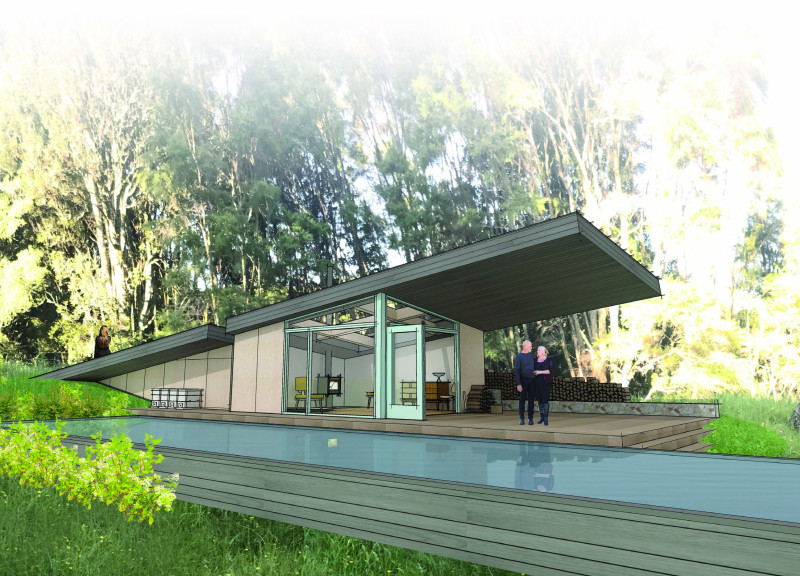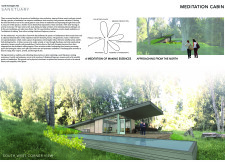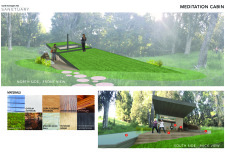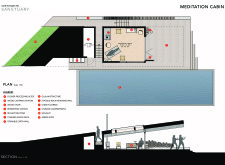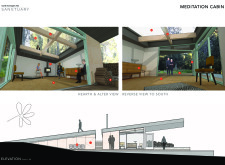5 key facts about this project
The Earth Energies NZ Sanctuary is set in a serene natural landscape, designed to promote meditation and mindfulness. It illustrates a clear concept of separation and flow, creating spaces that encourage deep reflection and connection with one's surroundings. The design carefully integrates functional areas that provide diverse opportunities for engaging in practices that support well-being.
Concept and Spatial Organization
At the heart of the design is the relationship between voids and planes. These elements translate mindfulness principles into a tangible experience. The sanctuary is organized into distinct zones, each designed to evoke different feelings. Users can move through the space and find moments of calm and introspection. Areas dedicated to meditation, beekeeping, and flower processing coalesce into an environment that nurtures individual and communal practices.
Functional Elements
Various functional areas are skillfully integrated throughout the sanctuary to accommodate a range of activities. A flower processing alter serves as a space for creating vibrational frequency essences. Nearby, a wood chopping station supports sustainable resource use. The inclusion of a beekeeping station emphasizes the connection between human activities and nature, adding to the site's rich experience. Outdoor areas, like the covered wood deck and reflecting pond, are included to invite users to engage with their environment meaningfully.
Material Considerations
The choice of materials contributes significantly to both function and aesthetic appeal. Glass is used to allow natural light to fill interior spaces, creating a welcoming atmosphere. Gypsum provides a smooth surface for finishes, enhancing the overall appearance. Cork flooring is chosen for its sound-absorbing qualities and tactile warmth. Glulam wood decking offers structural support while aligning with the ecological themes present in the design. Stacked rock serves a grounding purpose, tying the structure firmly to its context.
Contextual Integration
Architectural features enhance user interaction with the environment. An operable entry wall allows for easy movement between indoor and outdoor areas. With built-in storage, the design maintains organization for various activities without disrupting the tranquil atmosphere.
The sanctuary succeeds in merging structure with nature, inviting individuals to explore their surroundings. The arrangement of spaces encourages contemplation and engagement, creating a setting where mindfulness can flourish.


